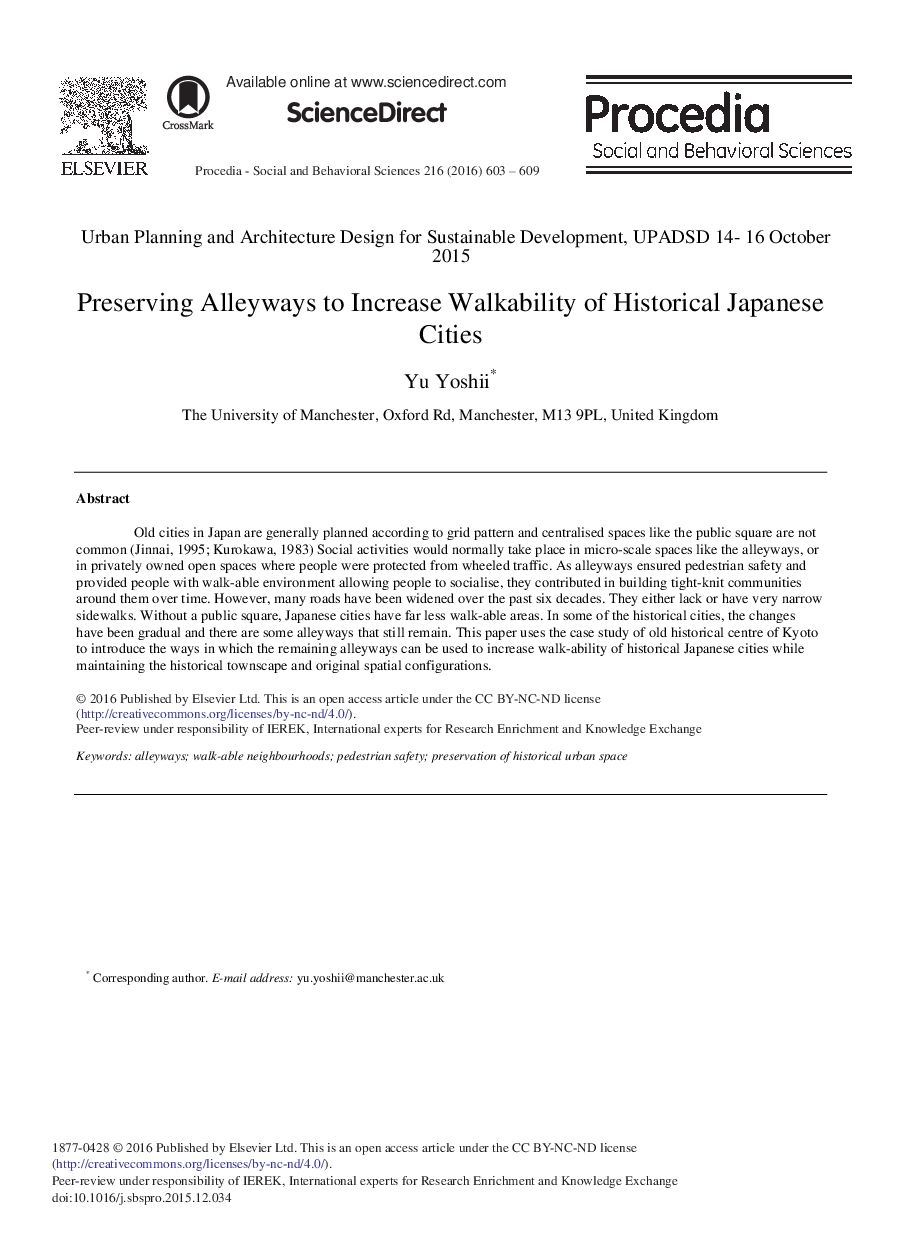| Article ID | Journal | Published Year | Pages | File Type |
|---|---|---|---|---|
| 1108766 | Procedia - Social and Behavioral Sciences | 2016 | 7 Pages |
Old cities in Japan are generally planned according to grid pattern and centralised spaces like the public square are not common (Jinnai, 1995; Kurokawa, 1983) Social activities would normally take place in micro-scale spaces like the alleyways, or in privately owned open spaces where people were protected from wheeled traffic. As alleyways ensured pedestrian safety and provided people with walk-able environment allowing people to socialise, they contributed in building tight-knit communities around them over time. However, many roads have been widened over the past six decades. They either lack or have very narrow sidewalks. Without a public square, Japanese cities have far less walk-able areas. In some of the historical cities, the changes have been gradual and there are some alleyways that still remain. This paper uses the case study of old historical centre of Kyoto to introduce the ways in which the remaining alleyways can be used to increase walk-ability of historical Japanese cities while maintaining the historical townscape and original spatial configurations.
